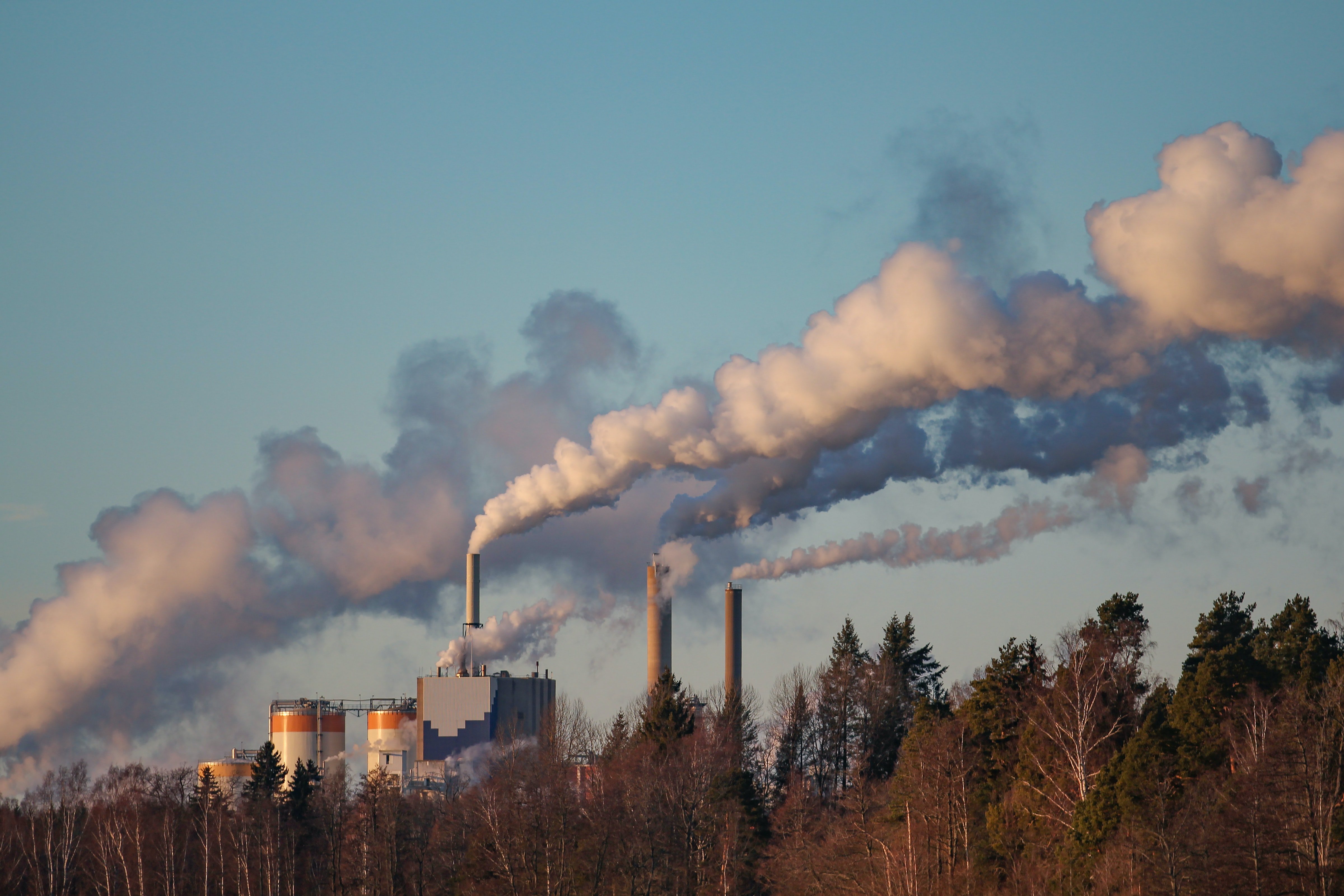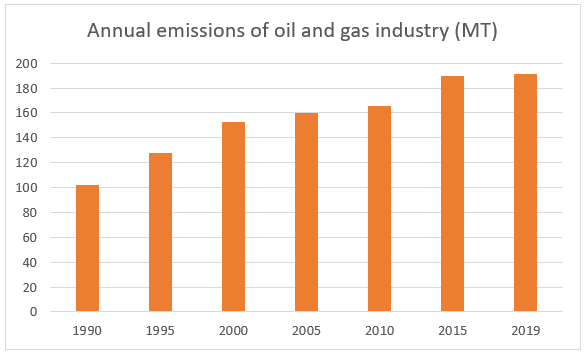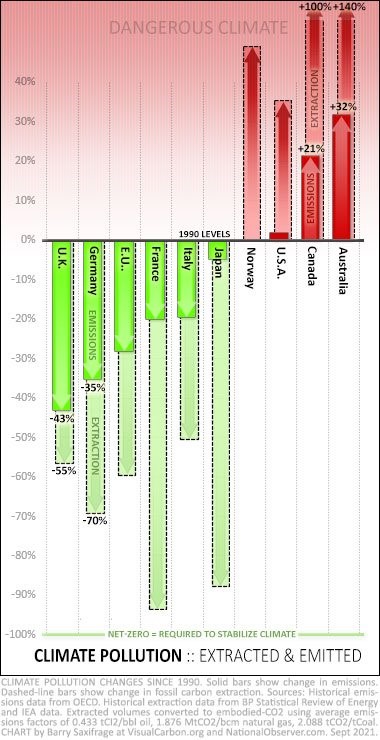
For decades, Canadians across different sectors of the economy have been working to reduce greenhouse gas (GHG) emissions. From agriculture to construction, to our household carbon footprints, people in Canada are ready to do their part for the climate – and now it is Big Oil’s turn.
Emissions from the country’s oil and gas industry cannot keep rising. In order for Canada to have a chance of reaching its commitment to reduce emissions by 40-45% by 2030 – let alone by the 60% deemed by leading climate groups to be Canada’s “fair share” of reductions needed to limit warming to 1.5 degrees – oil and gas sector emissions need to decline, sharply and immediately.
Recognizing this need, in the 2021 election the Liberal Party promised to “cap and cut emissions from oil and gas.” After his re-election, at the climate talks in Glasgow last year, Prime Minister Trudeau elaborated on this pledge:
We'll cap oil and gas sector emissions today and ensure they decrease tomorrow at a pace and scale needed to reach net-zero by 2050.
More recently we’ve learned that 2021’s “today” may mean 2023 in practice, but all indications are that the government is moving to establish a legal cap that will prevent oil and gas emissions from rising and force them to decline over time so we can finally meet our climate targets.
There is increasing consensus that emissions from the oil and gas industry must decline along with emissions from other sectors. However, some have questioned why a cap would only target the oil and gas industry, rather than all sectors. Others have expressed concern that the government is tackling emissions, rather than production. Canada’s increasing production of oil and gas, which when burned cause climate change, is inconsistent with a safe climate future, and a poorly designed cap could allow industry to rely upon speculative technological solutions such as carbon capture and storage (which the government is, indeed, interested in).
In this blog, we look at the history of oil and gas emissions in Canada and why a cap is needed, why the federal government is right to target emissions rather than production and what that cap should look like.
If you’d like to take action to press Canada to implement a strong emissions cap on the oil and gas industry, you can use our handy action tool by clicking here.
How oil and gas emissions caused Canada to miss its climate targets
In the story of how Canada has missed every single climate target that it has set for itself, the oil and gas industry plays a major role.
In 1995 the Canadian Association of Petroleum Producers (CAPP) signed an agreement with the Canadian government promising that their members would voluntarily work to reduce their greenhouse gas emissions to help achieve the Canadian goal of returning to 1990 GHG emissions by 2000. The Minister of Natural Resources, Anne McLellan, boasted that the agreement “demonstrates that the voluntary approach is a meaningful and substantive way to make progress in addressing climate change.” Oil and gas industry companies signed up and CAPP reported that by October 1995, companies representing about 68% of Canadian oil and gas production were enlisted.
But this voluntary approach did not deliver, and oil and gas emissions in Canada rose year after year.

Since CAPP’s voluntary commitments in 1995, the industry has increased its annual emissions by 63 MT, or a 50% increase in emissions, making it responsible for over a quarter of Canada’s GHG emissions. Some of this increase in emissions is from an increase in production (which is itself troubling from a climate point of view), but according to Canada’s 2019 National Inventory Report, the industry is also generating about 16% more greenhouse gas emissions per barrel of oil produced than it did in 1990 (due to a shift to the more carbon-intensive oil sands).
That does not, of course, count the emissions from our oil and gas when it is exported and burned overseas, which is four to five times more than the industry emissions that occur at point of production.
As Barry Saxifrage has pointed out, if it were not for the oil and gas industry, Canada would have come pretty close to achieving its past climate targets. He also points out that Canada is not alone in missing its climate targets due to an overactive oil and gas industry. Globally, the countries that have done well in reducing their emissions have also reduced their extraction of fossil fuels, and those countries which, like Canada, have ramped up extraction are without exception missing their climate targets.

Changes in national emissions and fossil fuel extraction since 1950, for G7 nations plus Norway and Australia
This is not to say that oil and gas is the only laggard industrial sector in Canada – notably emissions from the transportation sector have risen only slightly less rapidly than the oil and gas industry (also sitting at about a quarter of Canada’s overall emissions). The auto industry has done a lot to drive that growth in emissions, and while Canada has climate plans intended to target transport emissions, more needs to be done.
But at the same time, the oil and gas industry is unique in both the magnitude of its emissions (26% of Canada’s total) and its ability to largely avoid binding measures. A recent study of the carbon price applied to the industry shows that due to loopholes and preferential treatment by the provinces, the oil and gas industry pays the lowest carbon price of any industry in the country.
Most of the oil and gas companies working in Canada’s oil sands have signed onto the “Oilsands Pathways to Net Zero,” promising to reduce their emissions to net zero by 2050, which raises the question of why they would object to a cap on their emissions (though we’ve seen how reliable their voluntary commitments are). Alberta’s oil and gas industry has previously agreed to a “cap” on oil sands emissions that would have allowed emissions to continue to grow to 100MT (oil sands emissions are currently around 70MT), but at least one industry player has said that even a cap that (gasp!) actually decreases emissions is acceptable if the “emissions reductions happen slowly.”
However, a closer look at the Oilsands Pathways plan reveals that the industry would only cut emissions reductions to 2030 by about a third of current emissions, which is far short of Canada’s national target to reduce emissions by 40-45% relative to 2005 levels. These emissions reductions would also depend heavily on technologies to capture and store carbon dioxide that have never been deployed to scale or even (in some cases) developed yet, in later years. The plan seems to be vague even about what technologies will be used, noting that reductions from “Carbon Capture Utilization and Storage” (CCUS) might actually include “nuclear and/or hydrogen.” (Since oil and gas emissions increased from 2005 to 2022, arguably the industry has further to go to get back to 40-45% below 2005 levels – a 40% reduction relative to 2005 levels for the oil and gas industry is an approximately 50% drop relative to 2019 levels.)
It is clear that Canada cannot expect to meet its 2030 or 2050 national climate targets without requiring the oil and gas industry to do more than it has currently voluntarily committed to. And based on our experience with voluntary commitments from the industry, a law requiring the industry to keep its emissions below a mandatory cap makes sense.
Why doesn’t the federal government go after production?
Given the importance of the oil and gas industry to Canada’s climate goals, and its history of frustrating those goals, we urgently need Canadian climate laws that focus on this industry.
The government’s pledge is to regulate emissions from oil and gas – not production. Given the fact that increased production inevitably means more greenhouse gases when these products are burned, clearly oil and gas production in Canada will need to decline in order for us to uphold our commitment to achieve our fair share of global emissions reductions.
However, reducing production is the responsibility of the provinces, meaning the federal government must turn to other tools for cutting oil and gas emissions.
Why? In short, our Constitution, the “supreme law” of Canada. The Constitution Act, 1867 prescribes what things the federal Parliament can regulate, and what is within the legislative authority of the provinces (called “heads of power”). And the Constitution is clear: only the provinces may make laws directly regulating the exploration and development of non-renewable natural resources.
Of course, that does not mean that the federal government cannot make laws that affect oil and gas. Canadian courts have been clear that Parliament may make laws that “touch on” provincial matters so long as those laws are primarily in relation to federal powers. The courts have also been clear that climate and the environment, which are not mentioned in the Constitution, are areas of shared jurisdiction.
As a result, both the federal and provincial governments may enact climate laws related to their other powers recognized in the Constitution. For example, the Supreme Court of Canada recently upheld the power of the federal government to enact the Greenhouse Gas Pollution Pricing Act (GGPPA) under its power over “Peace, Order and Good Government of Canada.” And in 2016, the Federal Court of Appeal held that regulations aimed at reducing GHGs were a valid exercise of the federal powers over criminal law.
While these cases confirm the federal government’s authority to enact laws aimed at reducing GHG emissions, these powers are not unlimited. In the GGPPA case, the majority of the Court was careful to only recognize federal authority to establish “minimum national standards of GHG price stringency to reduce GHG emissions,” and emphasized that the decision does not open the floodgates for future federal climate laws.
Maintaining the appropriate balance of power between the provinces and federal government is of fundamental importance to the courts, and any federal law to cap emissions must be designed in a way that respects the division of powers and promotes “cooperative federalism” – a form of federalism that “accommodates and encourages intergovernmental cooperation” (paragraph 50 of the GGPPA decision).
In our view, there is little doubt that the federal government can, and should, cap greenhouse gas emissions from the oil and gas sector, but it is doubtful that they could directly regulate oil and gas production.
That said, just because federal authority over oil and gas production is limited, it does still have powers over the oil and gas itself. For example, as anyone following or participating in the National Energy Board (now the Canadian Energy Regulator) hearings on the Enbridge Northern Gateway and Trans Mountain pipeline projects, the federal government has the power to reject interprovincial pipelines, as well as the export of oil and gas out of Canada.
Given the dire predictions of the Intergovernmental Panel on Climate Change, combined with the fact that Canada needs to do much more to reduce its emissions in line with its fair share, and the apparent lack of provincial will in key oil and gas provinces to curb production (we’re looking at you, BC and Alberta), the federal government must use every tool available to curb emissions. And a federal oil and gas emissions cap is one of those important tools.
Key elements of a strong emissions cap
An emissions cap could take more than one form, such as cap-and-trade or facility-specific caps. Regardless of the mechanism, there are certain requirements that will need to be met in order for the cap to best ensure that oil and gas emissions go down along with other sector emissions. Together with environmental and climate allies, we have identified five broad principles that should guide the development of an emissions cap. You can find a detailed discussion of these principles, and 20 specific criteria that fall under those principles, in our joint letter to the Canadian Net-Zero Advisory Body.
- An ambitious and equitable decarbonization pathway
While we use the term “emissions cap,” we are really talking about a series of caps, beginning now and descending in five-year increments to zero emissions in 2050. These five-year descending caps would form a “decarbonization pathway” that must be ambitious, equitable and consistent with Canada’s emissions target and the Paris objective of limiting global warming to 1.5 degrees.
- Comprehensive and absolute coverage
Additionally, it is critical that the oil and gas emissions cap be comprehensive in its scope in order to achieve the reductions needed. To that end, the cap should apply to all emissions associated with the industry, including upstream and downstream emissions.
- Robust compliance and enforcement
A cap must also have strong penalties for companies that violate the rules, and be designed to avoid pitfalls and ensure that the caps are met.
- A strong supporting regulatory environment
It is also critical that the emissions cap complement existing and future emissions reductions measures (such as the carbon tax), and be supported by additional policy and regulatory measures. Specifically, the cap should come with strong and sufficient “just transition” mechanisms that ensure no workers and communities are left behind, ensure that it results in additional emissions reductions, and avoid stranded assets and technological dead ends.
- Respect for Indigenous rights in the development and implementation of the caps
Finally, the design and implementation of an oil and gas emissions cap must be done in a way that respects and upholds the rights and authority of Indigenous peoples. The cap must be aligned with a full and sincere implementation of the United Nations Declaration on the Rights of Indigenous Peoples.
Canada needs a cap on oil and gas emissions. It has the power to impose one, and we know what needs to be in that cap.
If you agree, use the tool below to send an email to your MP and the Ministers of Natural Resources and Environment and Climate Change.
UPDATE: This action tool has been archived.